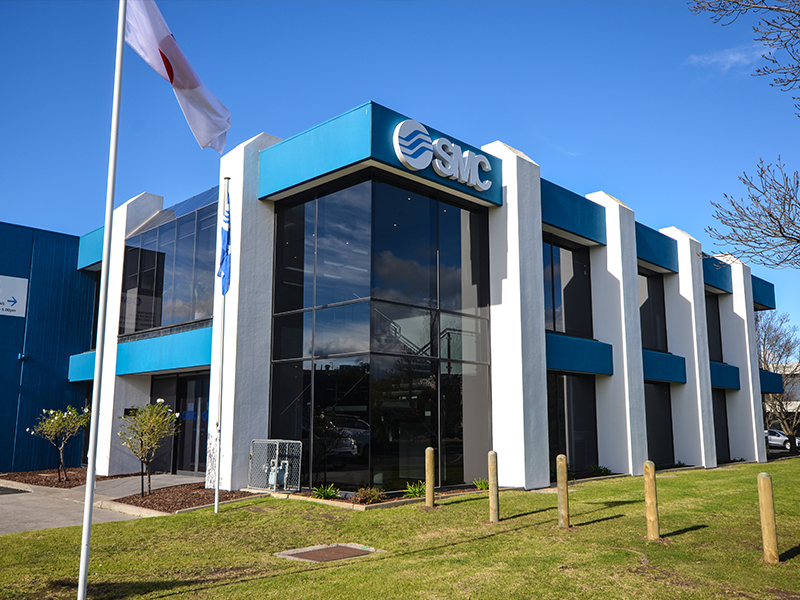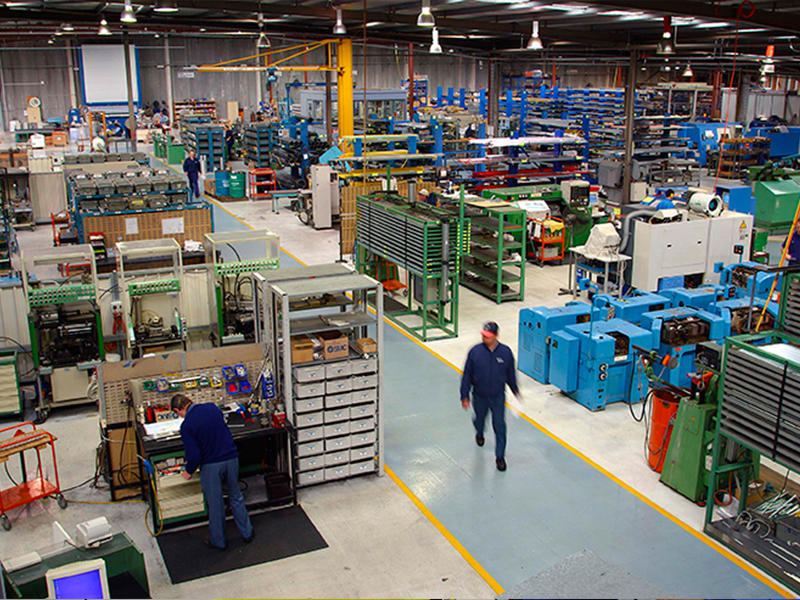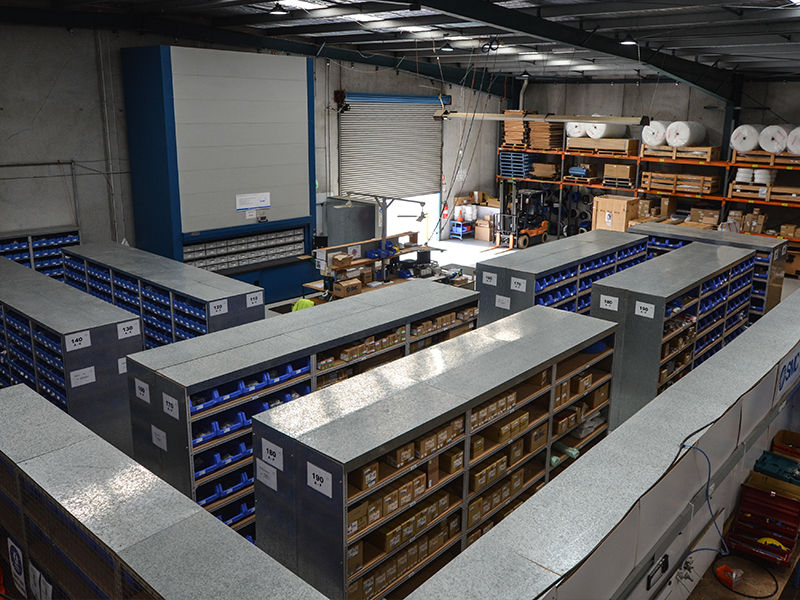SMC handles the task of diverse stock as is rides waves of economic change
At first glance, SMC Pneumatics’ Melbourne distribution centre doesn’t look especially big. But looks can be deceiving. The stock numbers are actually remarkably large, it’s just that the stock itself is small.
To help illustrate one of the challenges of distributing large quantities of small, pneumatic parts you’re going to need some bench space.
SMC’s Nicole van Riel lays out 15 thick books of catalogues and indexes.
“Our product range is enormous,” van Riel says.
“You have so many variations of each part, so many increments. So we have guides to pre-ordering.
“End users can get overwhelmed with how much product we have, so we simplify the catalogues into core products.”
Simplifying the ordering, picking, packing and shipping process has become the focus for SMC, which has recently opened a new Southern Australian distribution centre in Melbourne, repurposing the warehouse and tripling stock holdings to make it a central distribution warehouse for the region.
The 3,049 square metre building has room for further expansion.
The aim is to provide faster, more efficient delivery to customers Australia-wide, with the promise being same day delivery of standard parts to customers in Victoria, and overnight delivery to South Australia and Tasmania, something that was previously very difficult.
There was also the need to keep pace with their competitors, several of whom have their head offices in Melbourne.
The Japanese-owned company has more than 80 offices globally, and established its first subsidiary outside of Japan in Australia over 50 years ago.
The largest branch in Australasia is in Sydney, which has also traditionally had most of the stock holdings.
This has meant supplying parts to the entire country quickly has been a challenge. But adapting to challenges is one thing SMC doesn’t back down from.
 |
|
SMC’s Melbourne office and distribution centre
|
Moving beyond cars
Director of sales and marketing James McKew says SMC had to quickly adjust its core business after the shut down of the Australian car manufacturing industry.
“Traditionally, SMC’s dominance has been fuelled by the automotive industry,” McKew adds.
“Post the mining boom and auto closure we had to find new markets that were more sustainable.”
Today, SMC’s end users include food production and packaging, conveyor belts, doors, automation, mail sorting, general manufacturing and phones. Big players are still involved, though.
Woolworths new distribution centre in Melbourne’s south-east is all pneumatically run. But pneumatics also pop up in places you wouldn’t expect, such as farms with pneumatic gates, control cabinets and panels for operating filtration.
It’s about identifying new markets and looking to the future.
“We grew 11.5% last year and it’s the same this year so far,” McKew says.
“We’ve got our focus and got our momentum.”
 |
|
SMC’s Sydney warehouse
|
The central hub
Most customers expect overnight or same day delivery, but SMC wouldn’t be able to guarantee overnight delivery to regional Victoria or Adelaide from their Sydney warehouse alone without massive air freight costs.
“We repurposed this [Melbourne] space and put inventory down here to support robotics customers,” McKew says.
“Victoria and Adelaide always had a strong manufacturing base and that seems to be shifting into robotics and automation post-auto.
“So, by having inventory here, we can keep our DIFOD above 95 per cent.”
The centre is not just a warehouse, either. It also contains a training facility and an engineering and design department.
But the core business out back in the warehouse is to move freight quickly and efficiently.
SMC uses StarTrack and Toll as its primary couriers.
“They’re very integrated into us. They can pull out proof of delivery on every single delivery,” McKew says.
“We have challenges delivering into Perth, but we get a very good deal on air freight.”
 |
|
SMC’s Melbourne DC
|
The Melbourne centre was designed by SMC’s Sydney logistics manager, with the aim of keeping software systems consistent across both centres.
It’s been set up for high volume stock movement.
Part of the sales job is to help navigate customers through the sometimes bewildering options when it comes to ordering the right parts.
“The number of pick and packs is incredible,” McKew says.
Small parts, big business
Back at the central distribution centre, van Riel flicks through one of the catalogues.
The challenge SMC faces is in deciding which products to stock and making sure they have enough of the fast-movers and critical spares that customers will need.
“We’ve got over 12,000 base products and over 700,000 variations. The idea is that each branch keeps basic stock, then extras that can be used to modify that.”
 |
|
Nicole Van Riel In The SMC Melbourne Distribution Centre
|
To illustrate, she holds up a cylinder. “You might put a rod clevis on here, or you might have a mounting on the back.
“So basically we keep all these base products on site, plus the mods.
“Our store manager will then do the simple assembly and ship to the customer.”
The index catalogue has a guide to ordering. SMC also have sales engineers who will visit customers and recommend parts.
The idea is that the product required will be in stock in Melbourne, but if it’s not it will be shipped from either Sydney or Japan.
Next to the computer and workbench in the distribution centre is a large, rotating carousel. Items can be located within the carousel by punching the part number into the system.
The carousel will then rotate and bring the part to the front to be picked. For storage, part numbers are linked to shelf location, for easy retrieval.
Freight arrives from Sydney in air bags or boxes and is booked into the system and then shelf-located. Delivery from Japan is 15-20 days.
Repurposing for a purpose
Rodney Ryan, state manager – Victoria, South Australia and Tasmania, says maintaining normal dispatching was a challenge during the renovation of the central distribution centre.
 |
|
SMC Victoria state manager Rodney Ryan
|
“We moved stock and assembly areas around the renovation and at times called upon Sydney to ease the bottlenecks,” Ryan adds.
“The ultimate goal however was that customer deliveries were not disrupted, and we managed to achieve this.”
Check out the full feature in the August edition of ATN. Subscribe here.


